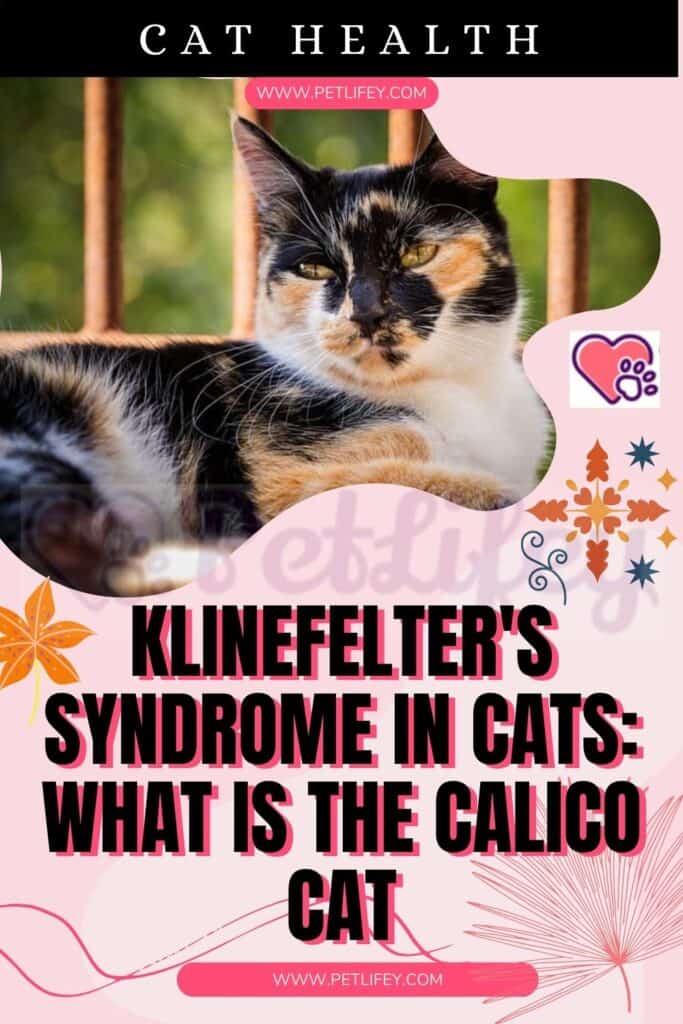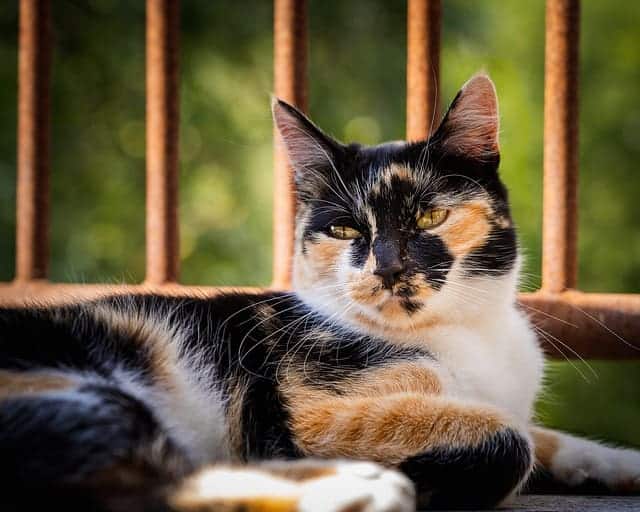
Klinefelter syndrome in cats is a genetic abnormality. What are the consequences? Let’s find out together in this article.
To most people, Klinefelter’s syndrome in cats will probably say nothing – at most, it could evoke the thought of a terrible disease. Much more likely you have heard of a calico cat. If not, you will find in the article all the basic information you need to know on the subject.
Klinefelter syndrome in cats: what it is
Klinefelter’s syndrome is a chromosomal disorder that can also affect cats.
This feline genetic disease is very rare, and is caused by an abnormal number of chromosomes. Let’s talk about the X chromosome: in males there is usually only one; in calyx cats, i.e. those affected by Klinefelter’s syndrome, there are two ( XXY ).
The effects of the pathology

What are the consequences of Klinefelter’s syndrome in cats? The effects are actually clearly visible.
The calico cat, as known, has a very particular color of the hair; these are the so-called tricolor felines whose coat is characterized by three different colors.
Well, in almost all cases (we are talking about 99.99%) the tricolor cats are females. Only one in 3000 tricolor cats is male. In short, the chances of meeting a calico cat are quite rare. And the reason is soon said: the specimen, as a rule, is sterile. Unable to reproduce, its genetic anomaly dies with it.
Not always however; in fact we distinguish between two forms of Klinefelter syndrome in cats:
- the non-mosaic form, which involves the complete sterility of the cat;
- the mosaic form, lighter, which instead allows the animal to reproduce. However it is very rare: only one cat out of 10,000 tricolors is a carrier; in other words, only one in three male calico cats can reproduce.
But be careful: unfortunately, infertility is not the only consequence of the genetic anomaly. Many felines with Klinefelter syndrome have a variety of health problems. In severe cases, they can be born with brain damage or abnormalities in one or more organs, requiring lifelong care.
Therefore, on average, their life expectancy is lower.






